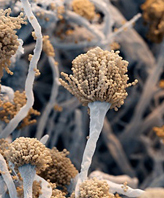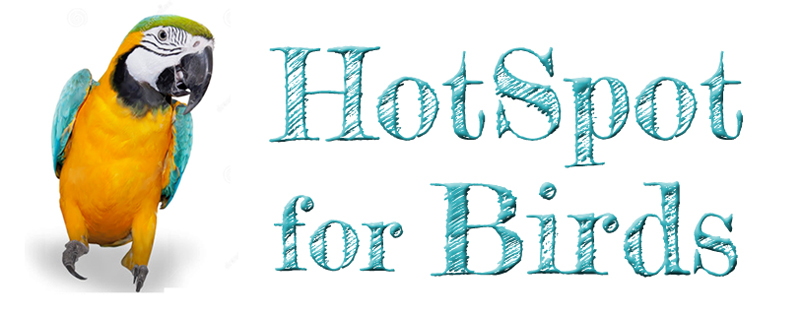by Hannis L. Stoddard, III, DVM
Aspergillosis is the most common fungal infection in birds caused by aspergella fumigates. Although birds are commonly exposed to the spores of this fungus, they develop the disease only under certain conditions. If a bird's immune system is suppressed by a concurrent illness, malnutrition or stress, it may become sick after exposure. Stress-induced Aspergillosis is frequently seen in birds subjected to surgery, reproduction, environmental changes, capture, confinement or shipping.
 Aspergella, as well as other fungi, grows readily in damp, dark conditions with poor ventilation. Encrusted fecal matter, damp feed, dirty feeding utensils and food that falls through cage grates all encourage mold growth. Interestingly, we see a high incidence of Aspergillosis in birds in the southwest where the environment is dry and not conducive to fungal replication. The speculation is the low humidity, coupled with the dusty environment, interferes with the normal mucous secretion in the birds' respiratory tracts and predisposes them to mycoses.
Aspergella, as well as other fungi, grows readily in damp, dark conditions with poor ventilation. Encrusted fecal matter, damp feed, dirty feeding utensils and food that falls through cage grates all encourage mold growth. Interestingly, we see a high incidence of Aspergillosis in birds in the southwest where the environment is dry and not conducive to fungal replication. The speculation is the low humidity, coupled with the dusty environment, interferes with the normal mucous secretion in the birds' respiratory tracts and predisposes them to mycoses.
Two forms of Aspergillosis are commonly seen in Amazons. The first is an acute generalized form characterized by the fungus in the lower respiratory tree as well as in the intestinal tract and other organs. Patients with this form of Aspergillosis exhibit labored respiration, severe depression and extreme emaciation, and are generally very ill. Unfortunately, the mortality rate is exceptionally high in this form. The second form is called a chronic localized form. This is the most common type of infection seen in Amazons. This chronic Aspergillosis tends to develop localized aspergellomas (pockets of fungal infection). The location will determine the clinical signs. A common place for aspergellomas to localize in Amazons is in the sinus cavity, characterized by intermittent mucoid exudation.
Diagnosis of avian Aspergillosis can be difficult, at best, other than by autopsy. Tentative diagnosis can be made with clinical signs as well as the absence of bacterial infection in moist exudates. A blood test showing an elevation in white blood cell count, mild anemia and an elevation in the monocytes also supports this diagnosis. X-rays should be taken on any suspect patient-many times the radiograph will reveal densities or nodules consistent with aspergellomas. Additionally, your avian veterinarian should take samples and attempt to culture the fungus in specially prepared culture media. Blood should also be submitted for serologic evaluation.
Once a bird is diagnosed as having Aspergillosis, appropriate treatment should be instituted by a qualified avian veterinarian. Each treatment protocol has to be tailored to the individual bird. A prerequisite for success is removing the concurrent immunosuppression that exists. This can be accomplished by management, by treating concurrent maladies and by the judicious use of immunostimulants. Aggressive antifungal treatment is in order, either localized or systemic. Surgery may be necessary with certain localized Aspergellomas, while aggressive nebulization and sinus flushings are warranted in certain other cases. Additionally, a long-term treatment schedule should be instituted.
|
Please Give Us a Link
If you found our site to be useful, please link our website to yours. We really appreciate any help we can get in making our avian health and safety articles readily available. |
Contact Information

|
||||||||||
|
